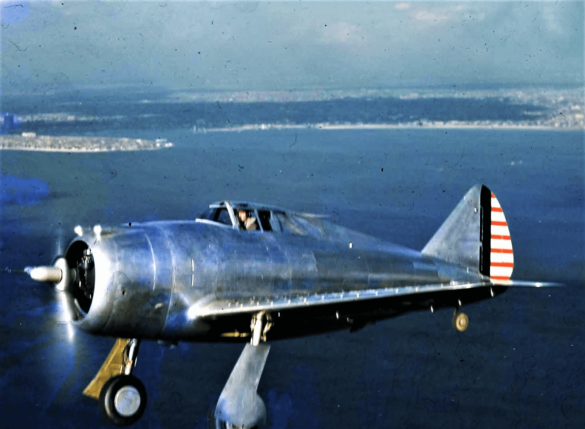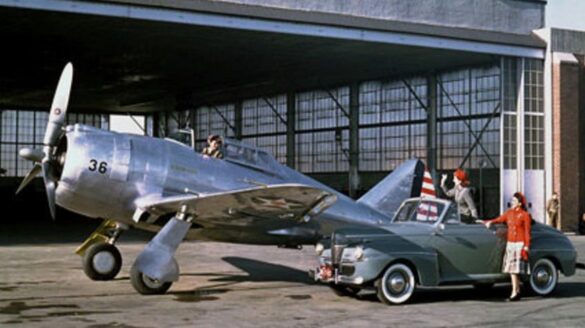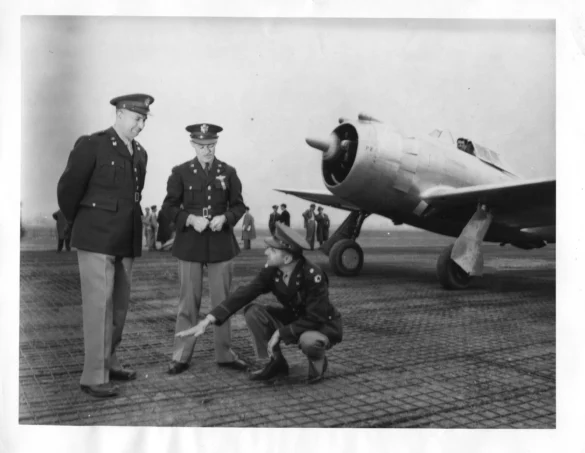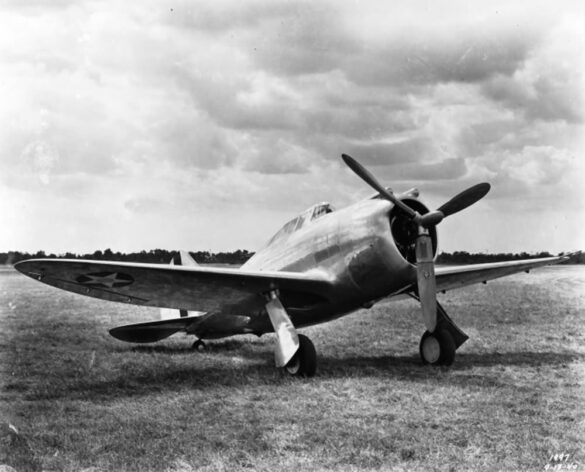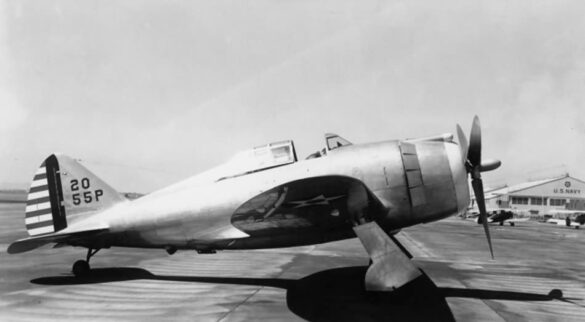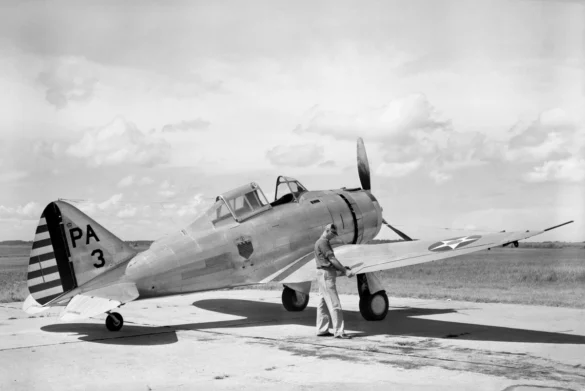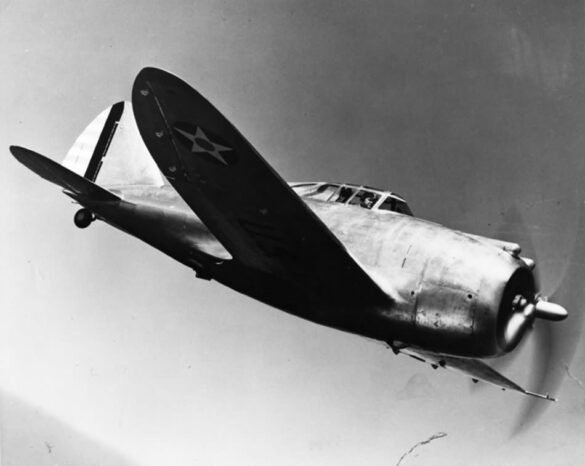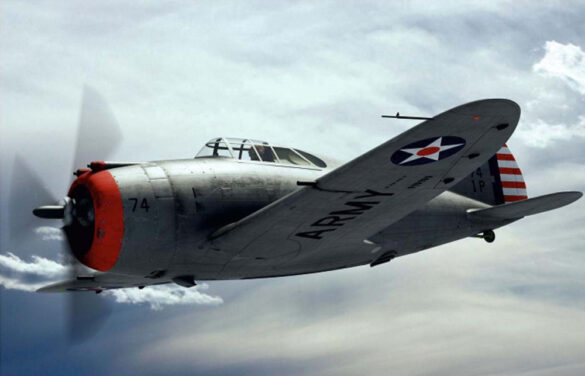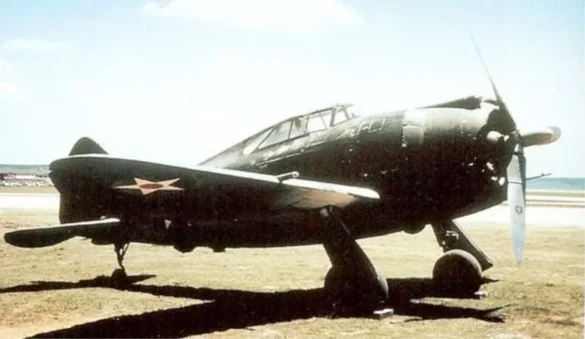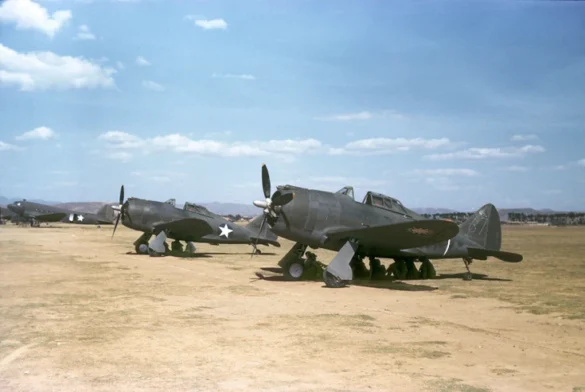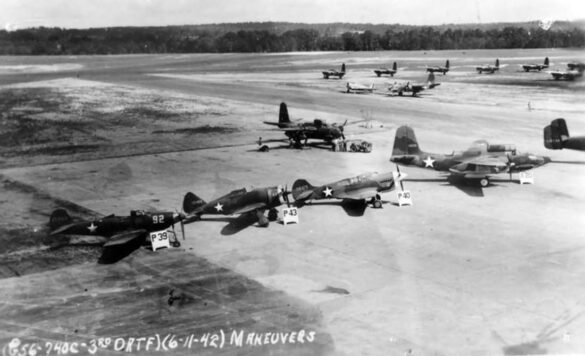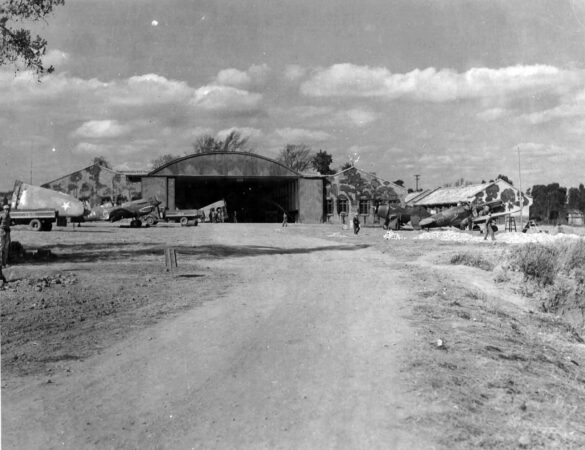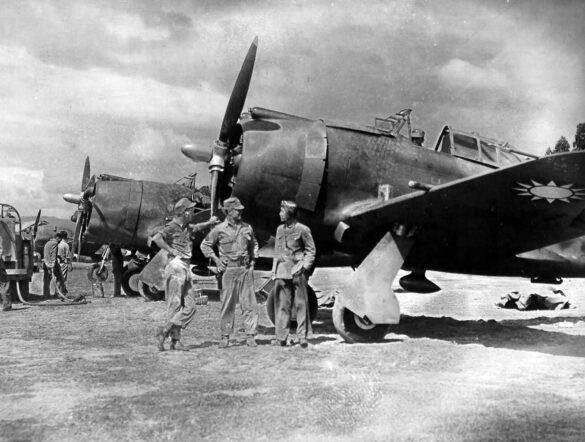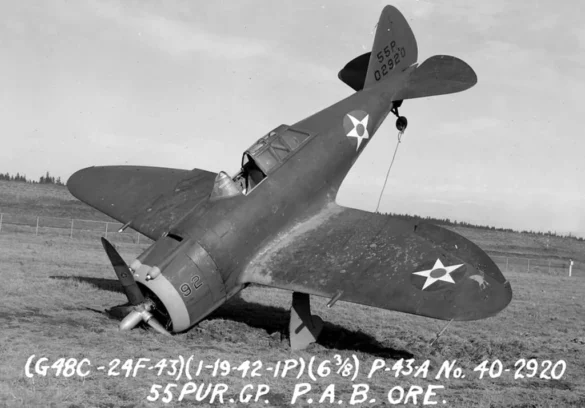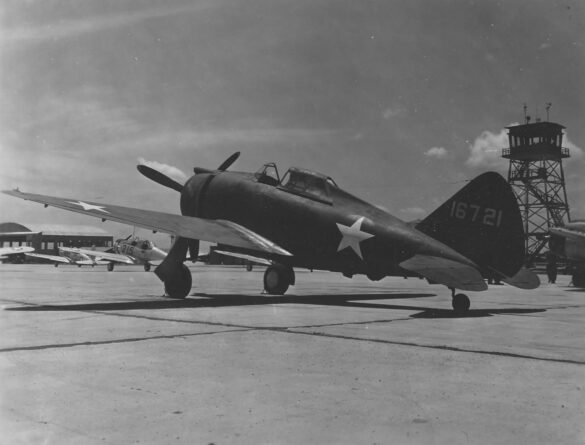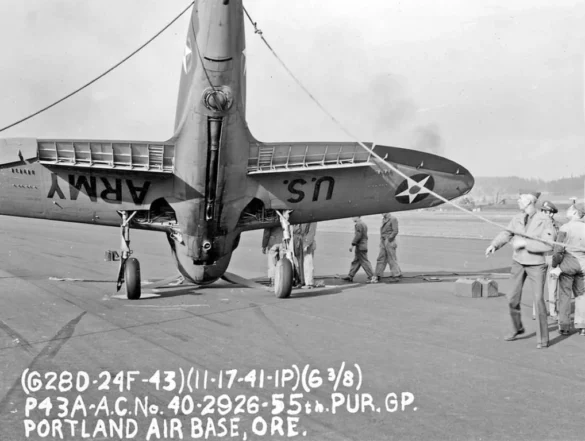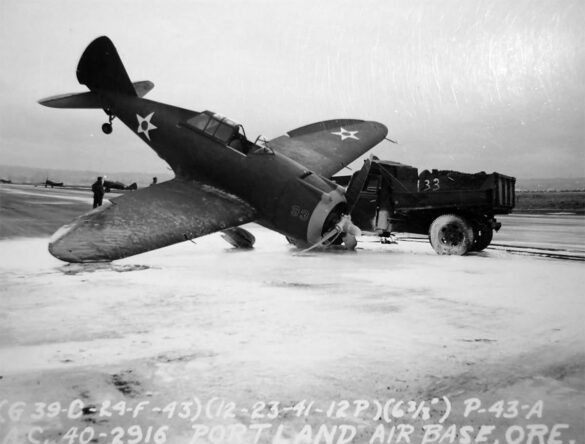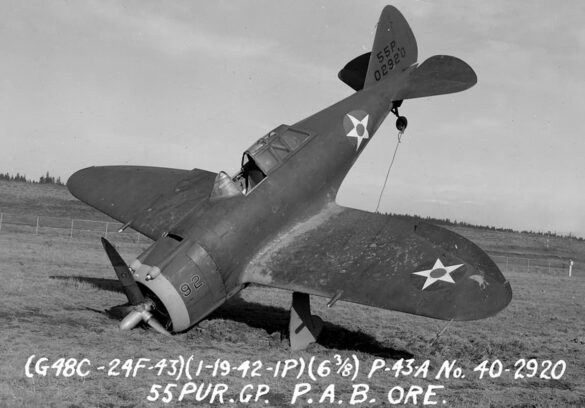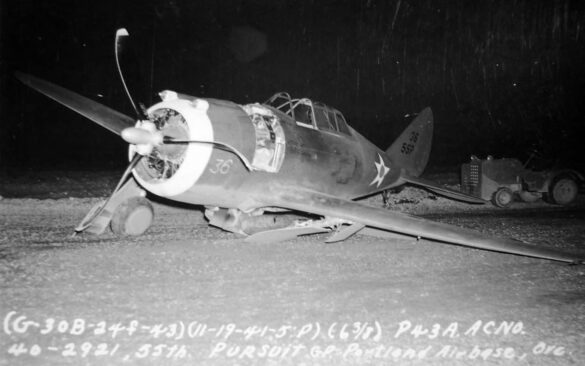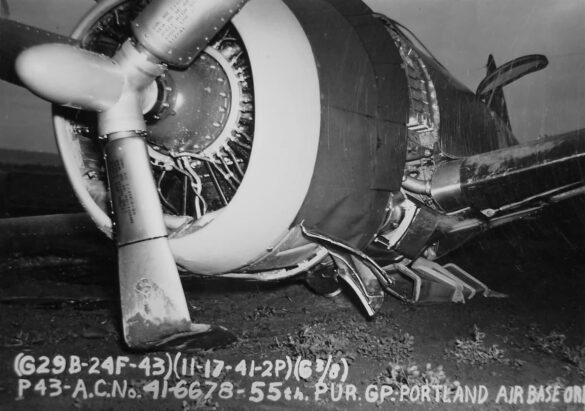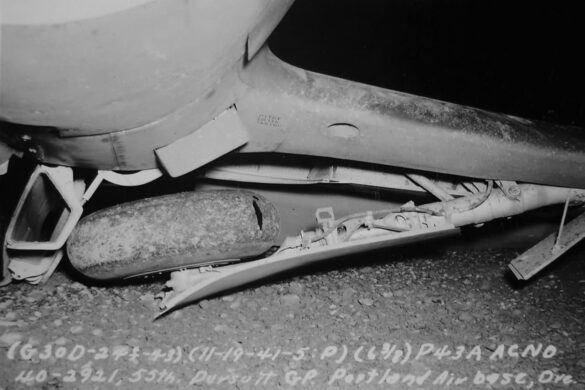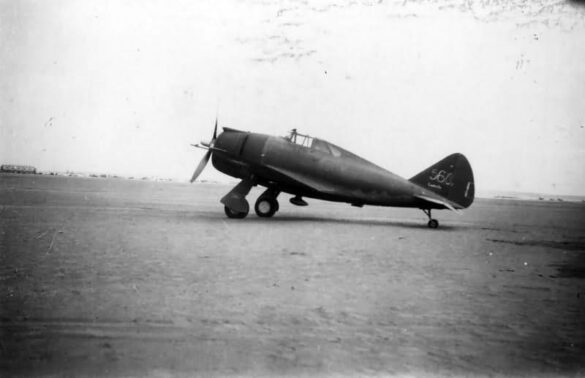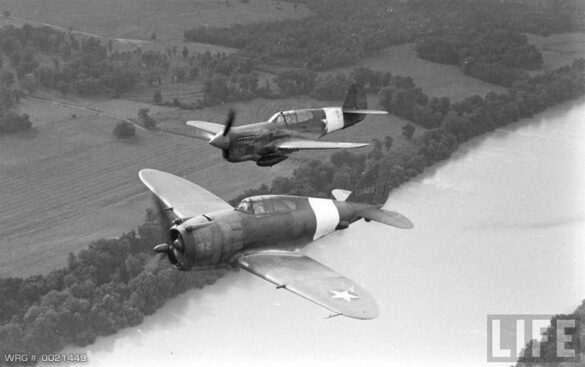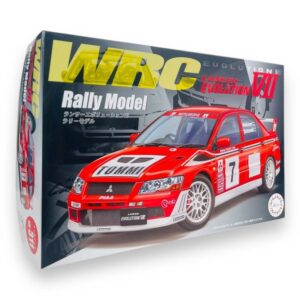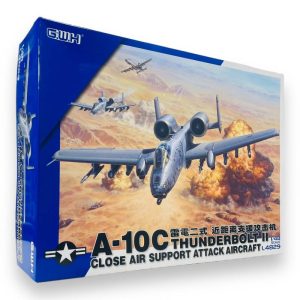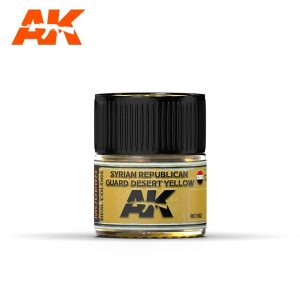article
Republic P-43 Lancer
The Forgotten Bridge to Greatness
The Republic P-43 Lancer served as a vital transitional fighter for the United States Army Air Corps (USAAC) in the years just before World War II. Though overshadowed by its successors, the P-43 played a crucial role in shaping the development of the legendary P-47 Thunderbolt and introduced innovations that influenced American aerial dominance.
From Seversky to Republic Aviation
In September 1939, aviation pioneer Alexander Seversky was removed from the company he founded. The Seversky Aircraft Corporation was then reorganized into Republic Aviation Corporation, which retained and refined many of Seversky’s early design ideas.
These foundations would culminate in the P-43 — a fighter that incorporated lessons learned from prototypes like the XP-41 and AP-4.
Design & Development
The Republic P-43 evolved from a series of prototypes that aimed to improve the P-35, Seversky’s earlier fighter. These included:
AP-2, AP-4, AP-7, AP-9
XP-41
NF-1 (Naval Fighter 1)
The most influential of these was the AP-4, which introduced a Pratt & Whitney R-1830-SC2G radial engine paired with a Boeing-optimized turbo-supercharger, generating 1,200 hp. This high-altitude performance system would later be adapted for use in the B-17 Flying Fortress.
Key Features of the AP-4:
Streamlined closed cowling (eventually abandoned due to overheating)
Turbo-supercharged engine configuration
Basis for the wing design of future Republic fighters
The YP-43: Engineering a Transition
In May 1939, Republic Aviation secured a contract to build 13 pre-production YP-43s, refining the XP-41 and AP-4. Notable upgrades included:
Engine: Pratt & Whitney R-1830-35 with General Electric turbo-supercharger
Armament:
2 × .50 cal machine guns (nose)
2 × .30 cal machine guns (wings)
Wing Design: Elliptical layout — a precursor to the P-47 Thunderbolt
Speed: Up to 356 mph (573 km/h) at 25,000 ft
Ceiling: Over 36,000 ft (11,000 m)
Despite these innovations, the aircraft lacked armor and self-sealing fuel tanks, making it less viable in modern combat scenarios.
Testing & Production
The first YP-43 (s/n 39-704) was delivered in September 1940, with the rest completed by April 1941. Republic constructed additional aircraft to keep production running while the P-47 was being finalized:
Total Built:
13 × YP-43
54 × P-43
80 × P-43A
Lend-Lease Use: Several units were sent to China, where they fought against Japanese aircraft.
Operational History
The P-43 was considered outdated for front-line service, but it found utility in:
Advanced fighter training
High-altitude reconnaissance (e.g., P-43B/C variants)
Service in China: 108 aircraft supplied via Lend-Lease
RAAF: 8 aircraft received, used for reconnaissance (serials A56-1 to A56-8)
Despite its limitations, the Lancer provided critical combat experience for Allied pilots. However, its lack of self-sealing fuel tanks and light armament made it vulnerable in dogfights.
Legacy
Although none of the P-43 Lancers survived beyond WWII, the aircraft left a lasting impact by helping Republic Aviation refine the engineering concepts that would produce the P-47 Thunderbolt — one of the most successful fighters of the war.
The P-43’s contributions may be understated, but for aviation historians and scale modelers, it represents a fascinating evolutionary step in American fighter design.
Color camo:
- Dark Olive Drab No. 41: A constant problem for modellers is the fact that many paint manufacturers simply produce one shade of wartime USAAF colors despite the changes that took place after the adoption of the ANA system. As such, any paint labelled simply US Olive Drab leaves itself open to interpretation. For OD 41 there is also the question of whether the aircraft in question is relatively new in theater and hence frenshly painted, or has been considerably exposed. Frankly, I am uneasy about offering recommendations on what OD 41 paint is most accurate and will therefore refrain from doing so; my personal preference among the main paint ranges is Gunze H78 (labelled as the US Army shade) which is neither too brown nor too green. Tamiya XF-62 is also quite dark and green but should be preferred as OD 41 than ANA 613 if one has to choose. Confusingly, Humbrol offers two different but identically-labelled ODs, 66 and 155, with the former being slightly greener and thus prefereable for OD 41. AK Real Colors has a handful of different OD paints of which their OD 41 (RC259) is excellent in my opinion, with an additional Army faded version (RC024) being a good option for contrasting areas like fabric surfaces.
- Neutral Gray No. 43: NG 43 is widely available in most ranges. It’s closest match is FS 36173 (and to a lesser extent FS 36270) which is still slightly cooler than it should be. NG 43 does not have an ANA equivalent, with the color that superseded it (ANA 603) being considerably darker with a subtle blue tint.
| No. 41 | Dark Olive Drab | FS 34086 (?)FS 34088 | ANA 613 (!) | No. 31 | ? |
| No. 43 | Neutral Gray | FS 36173 | ANA 603 (!) | No. 32 | ? |
| No. 43 | No. 41 | |||
| Neutral Gray | Dark Olive Drab | |||
| Scheme | ||||
| General | Lower | Upper | ||
| Paints | ||||
| Gunze Aqueous | H53 | (H78) | ||
| Gunze Mr. Color | C13 | (C38) | ||
| Humbrol | 176 | (66) | ||
| Model Master | (2035) | – | ||
| Revell | (374) | – | ||
| Tamiya | XF-53 | XF-62 | ||
| Vallejo Model Air | 71.051* | 71.316 | ||
| Vallejo Model Color | (70.992) | – | ||
| AKAN | 72038 | – | ||
| AK Interactive | AK 2203 | AK 2201 | ||
| AK Real Colors | RC261 | RC259 | ||
| AMMO by Mig | A.MIG-239* | A.MIG-237* | ||
| Colourcoats | ACUS13* | ACUS15 | ||
| Hataka | HTK-_033 | HTK-_004 | ||
| Lifecolor | UA 046* | UA 005* | ||
| Mission Models | – | MMP-091 | ||
| Mr. Paint | MRP-141 | MRP-139 | ||
| Xtracolor | (X158) | – | ||
| Xtracrylix | (X A1158) | – | ||
Modeling the P-43 Lancer?
Recommended Scale Kits:
FS Color References:
Underside: FS 36440 (Light Gull Gray)
Upper: FS 34087 (Olive Drab)
Cockpit: FS 34151 (Interior Green)
Weathering Tips:
Light chipping around engine cowlings and wing roots
Exhaust streaking along fuselage sides
Subtle sun bleaching on the upper surfaces for China-based aircraft
🔗 Related Products at GModel Art:
WWII USAAF Pilot Figure Set – 1/48
Weathering Set: Pacific Theater – MasterBox
P-43 Lancer Historical Blueprint Poster
Sources & Credits
National Museum of the United States Air Force
Republic Aviation Historical Society
“Forgotten Fighters of WWII”, Military Aviation Archives
Special Hobby Modeling Guides
Yiannis Mitzas
Admin:Yannis Mitzas “I have been modeling since I can remember, from my first kit and the Spitfire 1/72&1/48. Early 80s” Years later I was lucky enough to write articles in Modeller magazine. My favorite airplane is the F6F Hellcat and the F4U Corsairs. diorama. The purpose is more than the joy of creation. I started this blog to share my passion for modeling and weather conditions. If anyone has any comments or suggestions, please do not hesitate to contact

